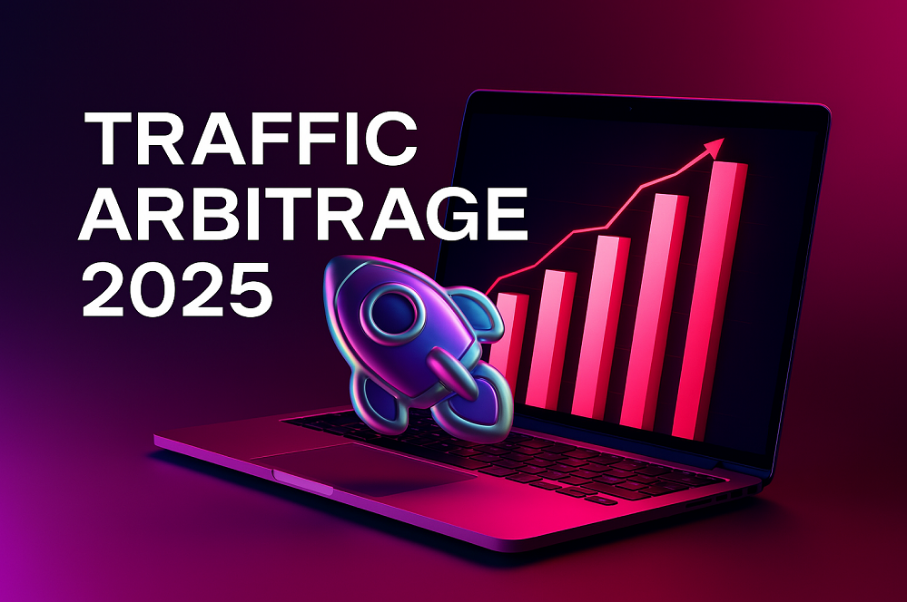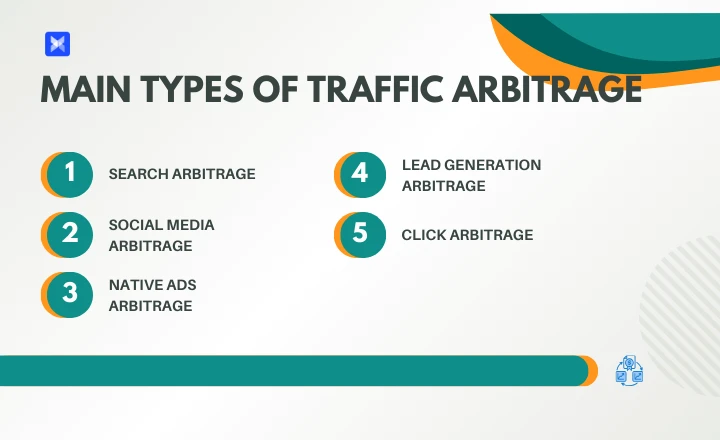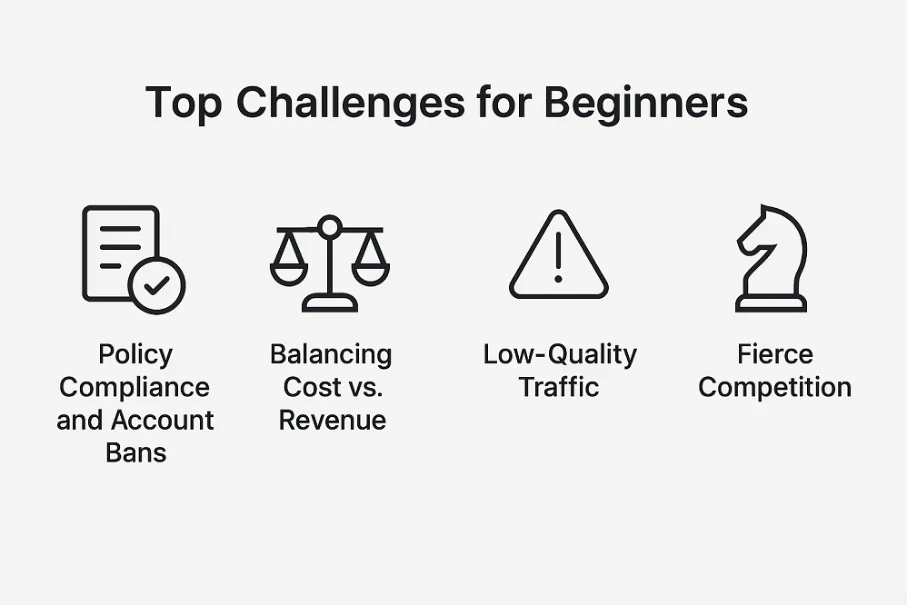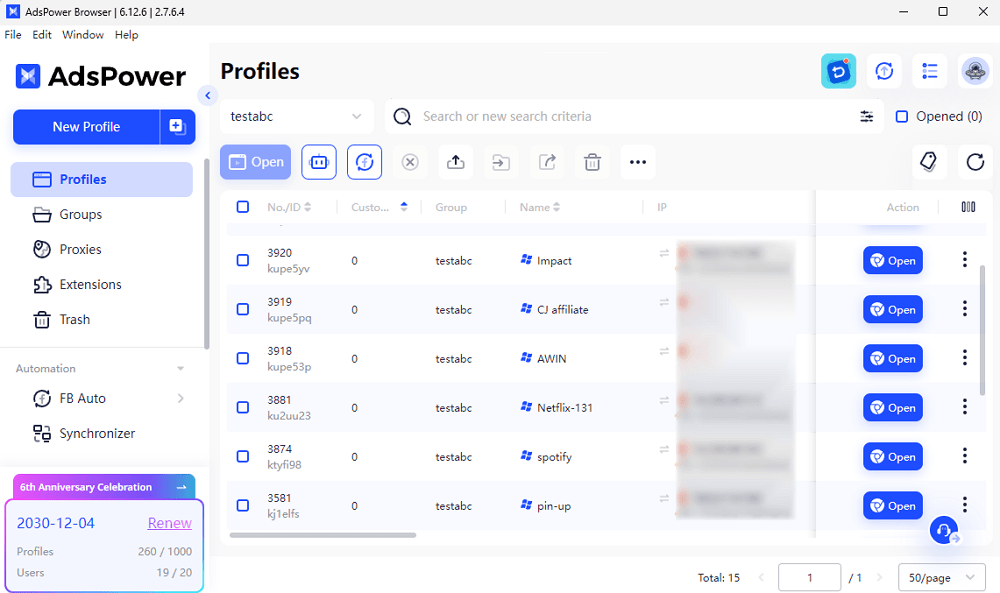Traffic Arbitrage for Beginners: A Step-by-Step Guide to Profitable Campaigns in 2025
Take a Quick Look
Don't miss how to launch profitable traffic arbitrage campaigns in 2025 in this beginner-friendly guide. Learn key strategies, platforms, and step-by-step tactics to turn paid traffic into revenue.
If you've spent any time exploring ways to monetize websites, you've likely come across the term traffic arbitrage. For many beginners, it sounds like a mysterious way to make money online—buy low, sell high—but in the context of website visitors and ads. This guide will walk you through what traffic arbitrage is, the main types of arbitrage strategies, and a step-by-step plan to launch profitable traffic arbitrage ads campaigns in 2025. We'll also cover the common pitfalls beginners face and how to overcome them. By the end of this guide, you'll have a clear roadmap to start turning cheap traffic into real revenue.

What Is Traffic Arbitrage?
Put simply, traffic arbitrage is a digital marketing model in which you purchase traffic at a lower cost and monetize it at a higher rate. The difference between what you spend and what you earn is your profit. In more traditional business terms, arbitrage usually involves buying and selling assets in different markets at varying prices. In the online world, however, the "asset" you're trading is website traffic.
For example, imagine you're paying $0.05 per visitor from a native advertising platform such as Taboola. Those visitors land on your website, which has display ads or affiliate offers. If you're earning $0.10 per visitor on average, you'd clear a profit of $0.05 per visitor. Over thousands—or even millions—of visitors, those small margins can add up substantially.
Why 2025 Is a Prime Time for Traffic Arbitrage
Over the past few years, advertising technologies and targeting capabilities have greatly improved. Platforms like Facebook Ads, Google Ads, and native advertising networks provide robust tools to pinpoint specific audiences at cost-effective rates. On the flip side, monetization options, such as Google AdSense, affiliate offers, and even AdSense traffic arbitrage methods, continue to expand into new regions and niches. This convergence means that 2025 is an excellent time to master traffic arbitrage.
Besides, AdsPower browser will help scale your traffic arbitrage operations efficiently and securely in 2025. Traffic arbitrage often requires running ads across multiple platforms, testing different geos, offers, and creatives — sometimes using more than one ad account per platform. But managing multiple accounts from the same device or IP can raise red flags and lead to bans. That's where AdsPower become vital for you!
Main Types of Traffic Arbitrage (With Platform Examples)
In this partner, we'll explore the main types of traffic arbitrage, complete with platform examples and actionable insights, so you can make informed decisions and build a sustainable arbitrage model.

Search Arbitrage
This involves running pay-per-click (PPC) ads on search engines like Google or Bing, directing users to pages filled with high-paying ads or affiliate offers. If done correctly, you can out-earn your ad spend by generating clicks on these monetized pages. The trick is carefully choosing keywords with decent traffic but lower competition (so you don't overspend).
Example Workflow:
- Buy clicks from Bing Ads or Yahoo Gemini
- Send users to a landing page with Google AdSense or affiliate links
- Earn more than the cost of the original click
Best For: SEO-heavy landing pages, AdSense monetization, and listicle-style content.
Social Media Arbitrage
This method uses paid ads on platforms like Facebook, Instagram, or TikTok to drive traffic to engaging content or offers. The goal is to grab attention with eye-catching creatives and send users to monetized pages. If your content goes viral or gets high engagement, your cost per click stays low — maximizing your arbitrage margin.
Example Workflow:
● Run ads on Facebook or TikTok targeting specific interests
● Redirect users to a blog post, product review, or quiz with affiliate links or ads
● Earn revenue from clicks, signups, or sales
Best For: Viral content, sweepstakes, affiliate product promotions
Native Ads Arbitrage
Native arbitrage means running sponsored content through networks like Taboola or Outbrain, blending your ads with editorial content. This type of traffic tends to have high intent if your headline and creative match user interest. You earn by monetizing through AdSense, affiliate offers, or re-targeting users with backend email or product funnels.
Example Workflow:
● Launch native ads on Taboola, MGID, or Revcontent
● Send visitors to an advertorial or comparison-style landing page
● Monetize via display ads or high-converting affiliate offers
Best For: Health, finance, beauty niches with strong emotional or curiosity-driven hooks
Lead Generation Arbitrage
In this model, there's less focus on lengthy articles or content. Instead, visitors are immediately redirected to a monetized landing page (for example, an affiliate offer or lead generation form). This can be lucrative if the offer has a high payout and the visitor is primed for quick conversions (like a sweepstakes entry or insurance quote).
Example Workflow:
● Run traffic from Facebook Ads or Google Search targeting specific demographics
● Drive users to a lead form (e.g., “Get a Free Insurance Quote”)
● Sell the leads to businesses or monetize through CPA networks
Best For: Finance, legal, home services, insurance, lead gen
Click Arbitrage
A simpler approach in which your main goal is to attract users to a page loaded with high Cost Per Click (CPC) ads. When visitors click on those ads, you earn revenue. This practice—often called AdSense traffic arbitrage—requires you to balance page layout, ad density, and user experience to keep everything compliant with Google's policies.
Example Workflow:
● Buy traffic from native ad networks like MGID or push platforms
● Send visitors to an article with multiple ad placements
● Earn revenue each time a user clicks on an ad
Best For: High-volume content sites, viral news blogs, entertainment pages
How to Start Traffic Arbitrage: Actionable Steps
Ready to give traffic arbitrage a try? Here's your step-by-step roadmap:
Step 1: Choose Your Niche and Monetization Method
Before you start buying traffic, you need a clear plan on how you'll monetize it. Will you place ads from Google AdSense? Promote affiliate offers through a CPA network? Or maybe you're combining content with lead-generation forms? Narrow down your niche, pick your monetization strategy, and design your website or landing page around it.
Step 2: Set Up Tracking and Analytics
To succeed in traffic optimization for arbitrage, you must track each campaign carefully. Tools like Google Analytics, Voluum, or RedTrack help you identify where your profits come from and which ads or keywords aren't pulling their weight. Proper tracking lets you cut underperforming campaigns and scale the winners.
Step 3: Launch Your First Ads
Pick a traffic source and begin testing. Common sources include:
- Native Ads: Taboola, Outbrain, Revcontent
- Social Media: Facebook Ads, TikTok Ads
- Search: Google Ads, Microsoft Ads
- Pop-Under/Push Notifications: PropellerAds, Adsterra
When you set up your ads, focus on eye-catching headlines and creatives. Your ultimate goal is high click-through rates (CTR) without resorting to misleading tactics. Also, watch your cost per click (CPC) or cost per thousand impressions (CPM) carefully. The lower you can maintain your traffic costs, the easier it is to profit.
Step 4: Test and Optimize
Start with a modest budget for each campaign. Gather data on clicks, conversions, time on page, and revenue per visitor. Then, optimize continuously:
- Refine Headlines and Creatives: Try different images and copy.
- Tweak Landing Pages: Keep them user-friendly and relevant.
- Adjust Targeting: Narrow or expand your audience based on performance.
Step 5: Scale Up Winning Campaigns
Once a campaign shows consistent profitability—meaning you spend less per visitor than you earn—scale it. Increase your ad budget, expand to new countries or languages, and consider adding more platforms (like Bing Ads or push notifications). Keep a close eye on profitability; scaling too fast can lead to higher ad costs and unexpected losses.
Bonus: if you launch ads with AdsPower browser, your ads accounts and campaigns will be safer and more efficient. Here is what AdsPower does for traffic arbitrage:
- Run multiple ad accounts
- Test different offers or GEOs
- Avoid account bans or flagging due to fingerprint similarity
- Increase traffic from various channels at a low cost
- Collaborate with a remote team
Top Challenges for Beginners (And How to Overcome Them)

Embarking on a traffic arbitrage journey isn't without hurdles. Here are the major pitfalls and how to tackle them:
Challenge 1: Policy Compliance and Account Bans
Issue: Platforms like Google Ads, Facebook Ads, and AdSense have strict policies. Violating them can get your accounts banned—sometimes without warning.
Solution: Read and follow the guidelines carefully. Avoid clickbait, misleading headlines, and spammy content. Also, consider using a reliable tool to manage multiple ad accounts (especially if you're branching out on multiple platforms).
Tips:
If you intend to run multiple campaigns or maintain more than one profile across different advertising networks, a multi-account browser like AdsPower can be invaluable. AdsPower creates separate browser profiles with unique fingerprints and IPs, helping you keep each account secure and under the radar. This is especially beneficial if you need to manage campaigns in different regions or test multiple angles without risking a platform-wide ban.
Challenge 2: Balancing Cost vs. Revenue
Issue: Sometimes, the traffic costs you pay for overshadow the revenue you generate, resulting in negative ROI.
Solution: Implement traffic optimization for arbitrage. Continuously test ads, channels, and landing pages. Pause any campaigns that aren't meeting your revenue goals. It's vital to keep a close eye on daily or even hourly spend when running arbitrage at scale.
Challenge 3: Low-Quality Traffic
Issue: Buying the cheapest traffic possible might lead to uninterested or even bot traffic that never converts.
Solution: Monitor key performance indicators like bounce rate, average time on site, and conversion rates. Sometimes paying slightly more for better audiences (on Facebook or Google) yields higher returns in the end.
Challenge 4: Fierce Competition
Issue: You're not the only one out there buying and monetizing traffic. Some niches are highly saturated.
Solution: Differentiate by targeting emerging markets or less-competitive niches. Also consider diversifying monetization methods (e.g., combining affiliate marketing with native ads).
Final Thoughts
Traffic arbitrage in 2025 remains a viable, potentially lucrative strategy, provided you know the fundamentals and put in the work to optimize and scale. From what is traffic arbitrage to understanding AdSense traffic arbitrage specifically, the core principle stays the same: drive cheap, relevant traffic to a monetized platform and pocket the difference.
By choosing the right niche, focusing on quality over quantity in your traffic sources, and using tools like AdsPower for secure account management, you set yourself up for long-term success. The key is methodical testing, relentless optimization, and scaling only what proves profitable. With patience, a data-driven mindset, and a touch of creativity, you can turn traffic arbitrage from a buzzword into a steady revenue stream—even as a beginner.
People Also Read
- How to Bulk Update Proxies in AdsPower
- The Best Email Affiliate Marketing Strategies for Higher Conversions
- Email Affiliate Marketing for Beginners: Can I Do Affiliate Marketing Through Email?
- Google Multi-login: Chrome vs. Antidetect Browser
- High Ticket Affiliate Marketing: How to Earn Big Commissions with Fewer Sales



